Choosing Emergency Rescue Beacons for Your Boat, Part 2
GPS Makes Rescue Easier—and Faster
Recently manufactured EPIRB’s and PLB’s include GPS, making it much easier for rescue services to home in on an activated device. That’s not the case with older devices without GPS, so look for the GPS designation when you shop—the extra money should be considered part of the basic cost.
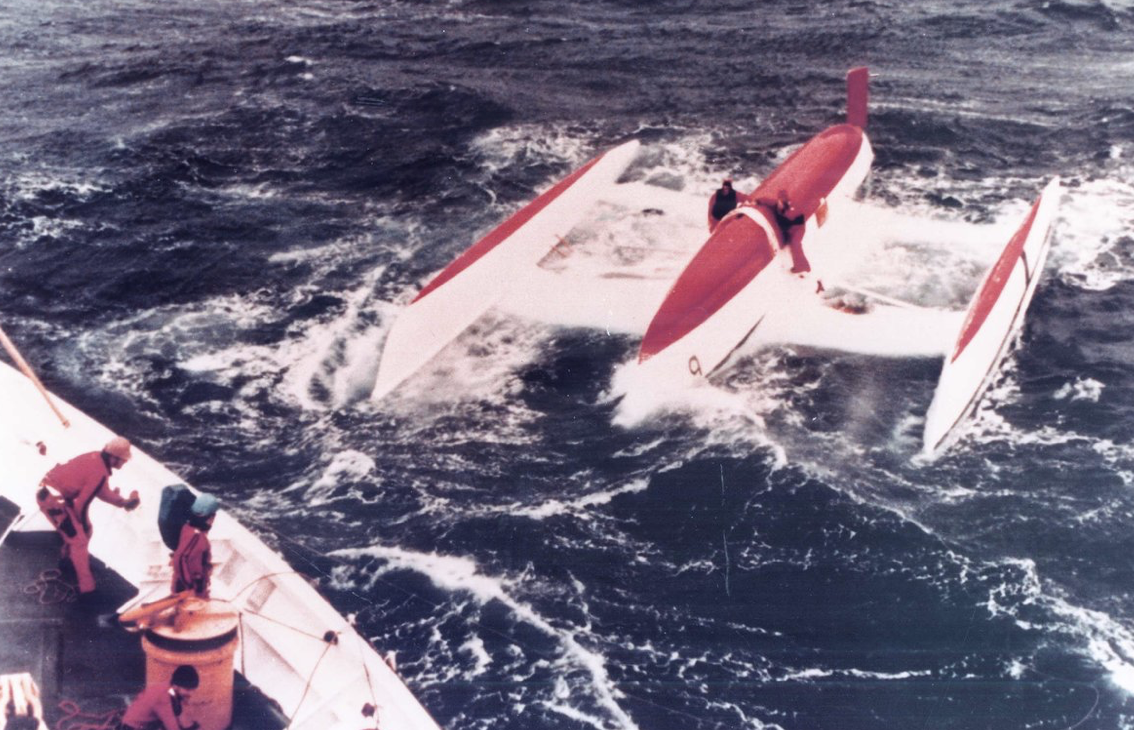
Before the introduction of models that include GPS, position was triangulated to within about two nautical miles and relayed to responders. The notification could take up to an hour.
After arrival at the general location, SAR personnel then followed a 121.5 MHz homing beacon that lead them to the exact location.
GPS is much faster and more accurate, and not that much more expensive.

Return Link Service
A Return Link Service (RLS) enabled beacon has an indicator, a light or text display, on the beacon that confirms to the user that the distress signal from the beacon has been received and localized by the Cospas-Sarsat system and forwarded to government authorities for action. It doesn’t mean that a rescue has yet been organized/launched, only that the distress alert has been received and routed to the appropriate government agencies.
But knowing that the device has sent out that signal and that it has been recognized will be very important should you ever have an emergency at sea. Again, spend a few extra dollars and get this feature—if you ever need it, you’ll be very glad you did.
Here’s a look at some of the best-known EPIRB’s and PLB’s on the market:
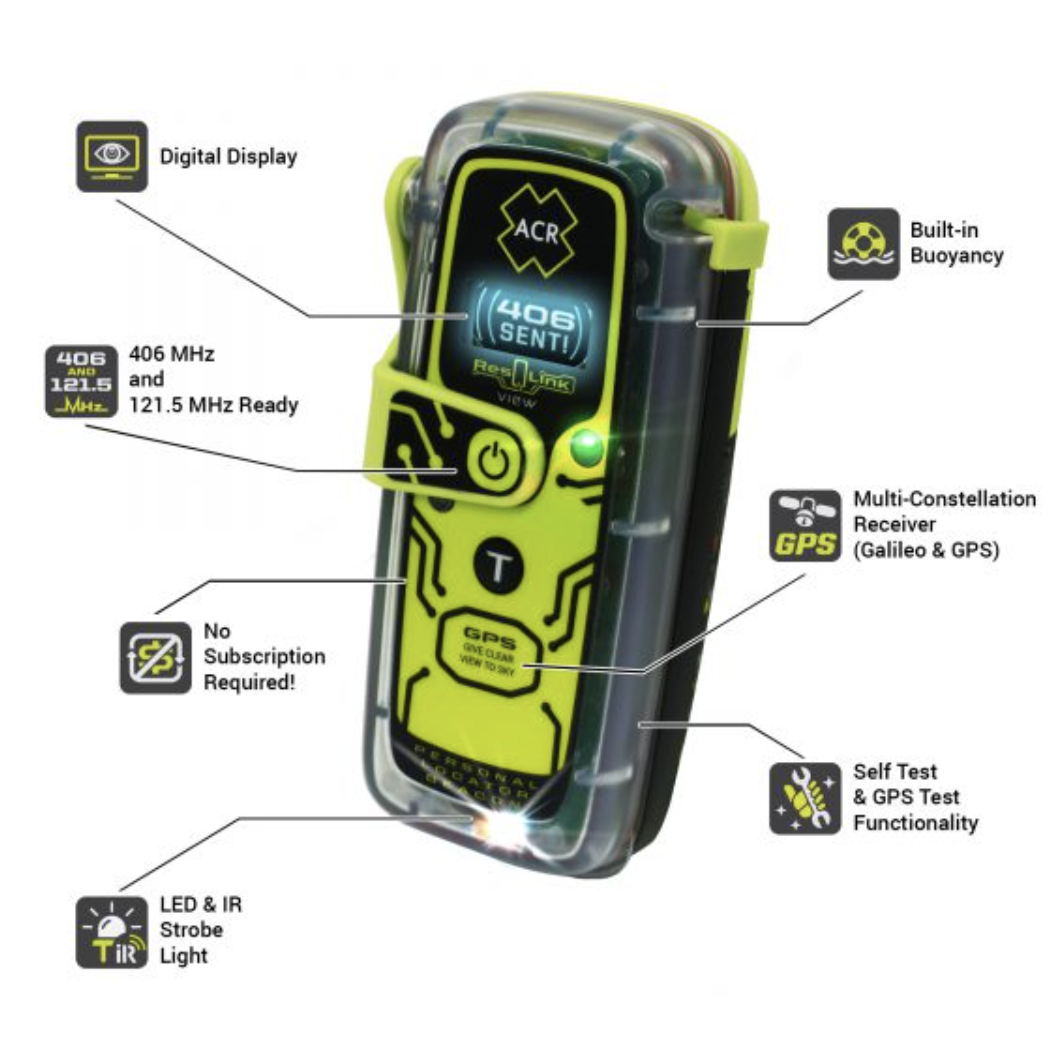
Oddly enough, PLB’s are not required to float—the assumption being they’re worn rather than free-floating. However, anything that can be dropped in the ocean will be dropped in the ocean—flotation can save you the price of the PLB. Examples of PLBs that do include these features are the ResQLink 400 Personal Locator Beacon ($340) and the ResQ Link View PLB ($389) by ACR Electronics. In addition to their buoyant design, both feature built-in conventional and infrared strobes. The View model includes a digital display which provides a text indicating the beacon is functioning as well as self-test functionality; www.acrartex.com

Garmin’s In Reach is a satellite communication device, not technically a PLB, but it does allow two-way satellite messaging for a monthly fee. It also operates as an emergency locator beacon. The device is about $450, and the monthly service is $15 to $65 a month depending on the communications services. It’s possible to turn the service on for a month or two, as you might for an extended voyage, then back off when it’s not needed. Garmin also makes the GPSMAP 66i, which is a handheld gps that also includes the satellite communication capability, again with the monthly service program—it’s $600; www.garmin.com

Kannad Marine’s auto-activation EPIRB is designed to fit inside a housing, shown in this cutaway, that protects it from heavy seas but will allow it to float free if the boat sinks. The Hydrostatic Release Mechanism at the top activates as the boat sinks below a preset depth to release the EPIRB. Units with AIS are available, and all include multiple strobe lights. Weight is 710 g (1.6 lb). For pricing, contact www.seasofsolutions.com
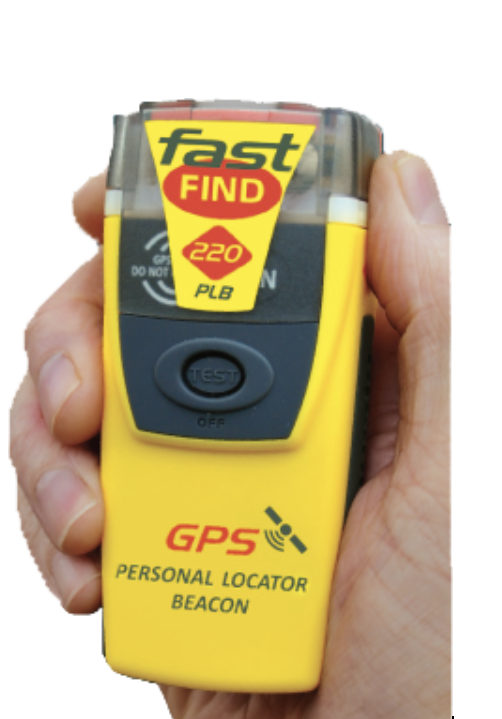
McMurdo’s FastFind PLB with GPS weighs just 5.4 oz (152g) and is smaller than a cellphone. It includes an LED signaling light with SOS function, and can transmit a rescue signal for up to 24 hours. Shelf life of the battery is 6 years. It floats when secured in the carrying pouch. It’s about $290; www.seasofsolutions.com
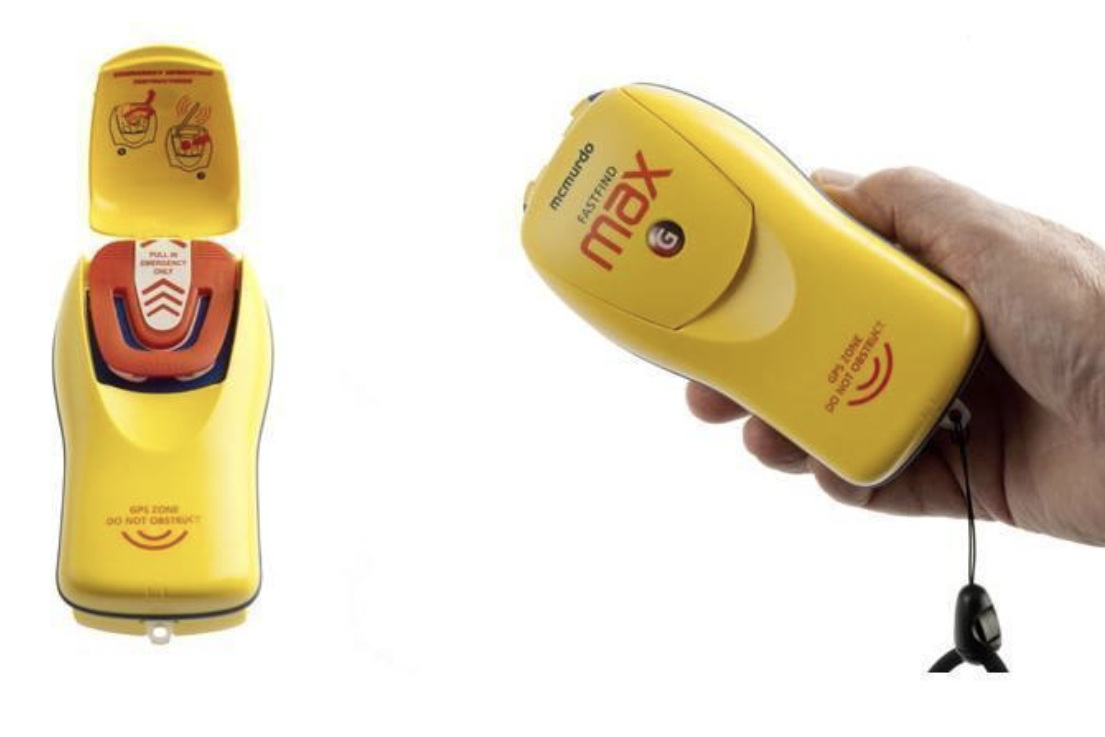
The McMurdo Fast Find Max is a compact Personal Locator Beacon waterproofed to a depth of 10 meters (32’). It floats via a float-coat and has a 48-hour battery life when activated, considerably more than some PLB’s. On activation it typically alerts emergency services within 3 minutes, and the GPS system locates the user to within 62 meters (200’). The battery life in storage is about 5 years. It’s more expensive than some PLB’s at about $550; www.seasofsolutions.com
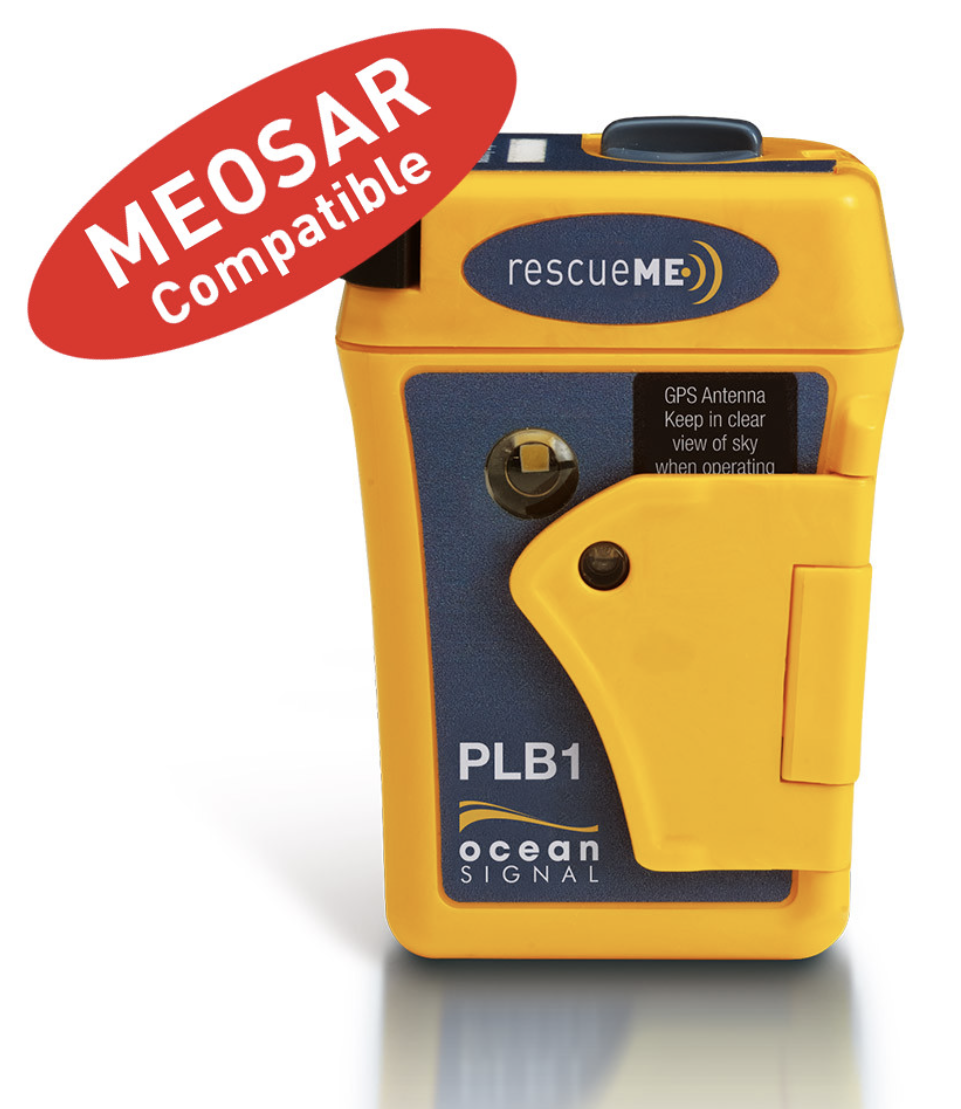
Ocean Signal says their PLB1 is the smallest PLB on the market at just 3” tall (77 mm), 2.1” wide (51 mm) and 1.3” (32.5 mm) deep. It weighs only 4 oz (116 g). It has a high-intensity LED and is waterproof to 49’ (15 m). It includes both a 406 MHz transmitter and a 121.5 MHz homing beacon for precise location when activated. The battery has a 7 year shelf life, one of the longest for PLB’s. Price is about $330; https://oceansignal.com
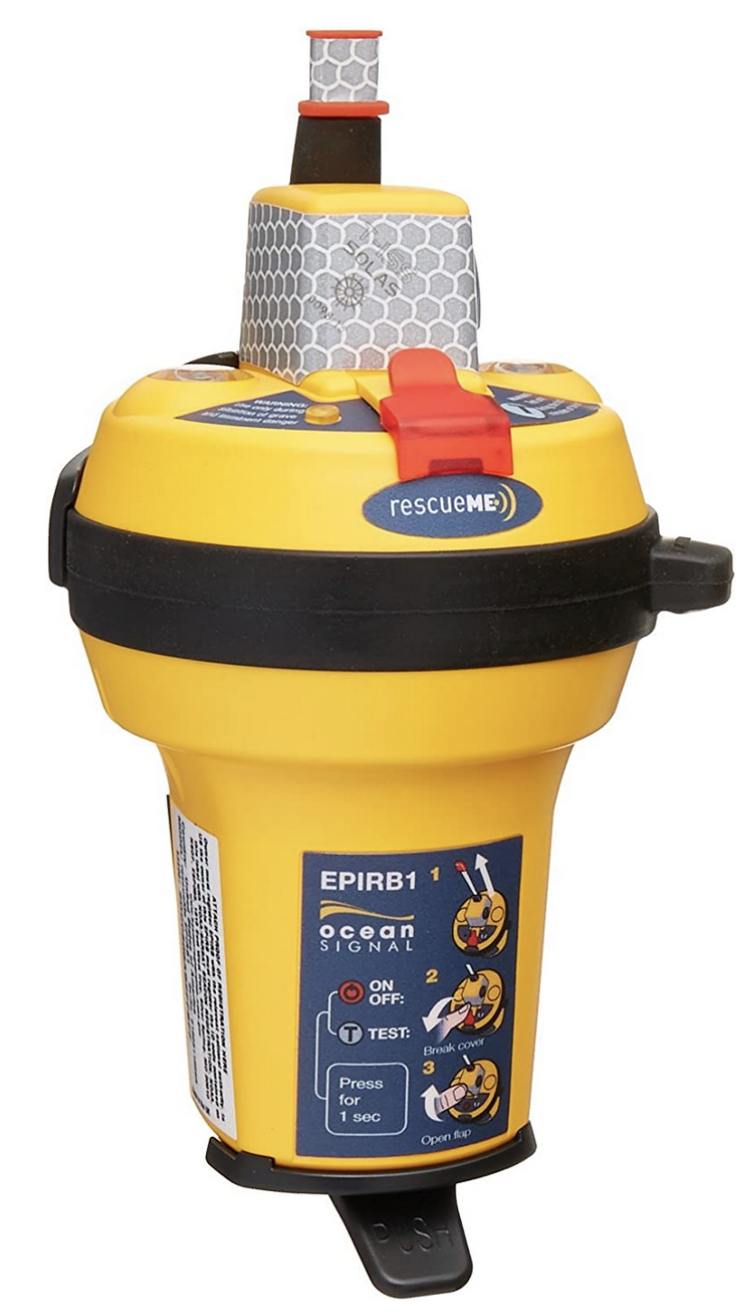
Ocean Signal also makes one of the smallest and least expensive EPIRB’s available in their EPIRB1, which lists for about $450. It includes a 66-channel GPS and 10-year battery life as well as a test feature and auto-activation. It’s about 30 percent smaller than most EPIRB’s, a plus for small open boats. Battery life is 10 years, warranty period 5 years; https://oceansignal.com